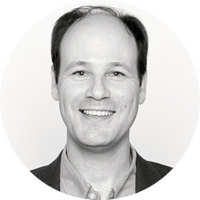NASA's Europa Clipper blasts off, seeking an ocean
The ship is headed toward Jupiter on a yearslong journey


What happened
Europa Clipper, the largest extraplanetary spacecraft ever built by NASA, took off from Florida's Kennedy Space Center Monday atop a SpaceX Falcon Heavy rocket, headed toward Jupiter. The spacecraft, which is the size of a basketball court with its solar wings unfurled, carries an array of nice specialized instruments to study an ocean believed to be buried 10 to 15 miles under the icy surface of Jupiter's moon Europa.
Who said what
Europa Clipper's historic mission "will tackle one of biology's core questions," The New York Times said: "Can life exist anywhere else in our solar system?" The spacecraft "won't look for life" directly, The Associated Press said. Instead its instruments — cameras, magnetometer, thermal imager and an ice-penetrating radar, among others — "will zero in on the ingredients necessary to sustain life," including organic compounds.
"We want to determine if Europa has the potential to support simple life in the deep ocean under its icy layer," said mission chief scientist Robert Pappalardo of NASA's Jet Propulsion Laboratory. "We don't expect fish and whales and that kind of thing." Europa isn't the only documented ocean world, but its ocean is most similar to Earth's, said program scientist Curt Niebur. "If Europa Clipper can show that in our one solar system there are two habitable worlds — Earth and Europa — that has profound implications for how common habitable worlds are in the galaxy."
The Week
Escape your echo chamber. Get the facts behind the news, plus analysis from multiple perspectives.

Sign up for The Week's Free Newsletters
From our morning news briefing to a weekly Good News Newsletter, get the best of The Week delivered directly to your inbox.
From our morning news briefing to a weekly Good News Newsletter, get the best of The Week delivered directly to your inbox.
What next?
Europa Clipper's 1.8 billion-mile journey is expected to take 5 1/2 years. It should enter Jupiter's orbit on April 11, 2030, before making 49 flybys of Europa over the next four years, coming within 16 miles of the moon's surface.
A free daily email with the biggest news stories of the day – and the best features from TheWeek.com
Peter has worked as a news and culture writer and editor at The Week since the site's launch in 2008. He covers politics, world affairs, religion and cultural currents. His journalism career began as a copy editor at a financial newswire and has included editorial positions at The New York Times Magazine, Facts on File, and Oregon State University.
-
 Trump’s poll collapse: can he stop the slide?
Trump’s poll collapse: can he stop the slide?Talking Point President who promised to ease cost-of-living has found that US economic woes can’t be solved ‘via executive fiat’
-
 Codeword: December 7, 2025
Codeword: December 7, 2025The daily codeword puzzle from The Week
-
 Crossword: December 7, 2025
Crossword: December 7, 2025The daily crossword from The Week
-
 Blue Origin launches Mars probes in NASA debut
Blue Origin launches Mars probes in NASA debutSpeed Read The New Glenn rocket is carrying small twin spacecraft toward Mars as part of NASA’s Escapade mission
-
 ‘The Big Crunch’: why science is divided over the future of the universe
‘The Big Crunch’: why science is divided over the future of the universeThe Explainer New study upends the prevailing theory about dark matter and says it is weakening
-
 Dinosaurs were thriving before asteroid, study finds
Dinosaurs were thriving before asteroid, study findsSpeed Read The dinosaurs would not have gone extinct if not for the asteroid
-
 The moon is rusting
The moon is rustingUnder the radar The Earth is likely to blame
-
 Africa could become the next frontier for space programs
Africa could become the next frontier for space programsThe Explainer China and the US are both working on space applications for Africa
-
 NASA reveals ‘clearest sign of life’ on Mars yet
NASA reveals ‘clearest sign of life’ on Mars yetSpeed Read The evidence came in the form of a rock sample collected on the planet
-
 SpaceX breaks Starship losing streak in 10th test
SpaceX breaks Starship losing streak in 10th testspeed read The Starship rocket's test flight was largely successful, deploying eight dummy satellites during its hour in space
-
 NASA is moving away from tracking climate change
NASA is moving away from tracking climate changeThe Explainer Climate missions could be going dark
